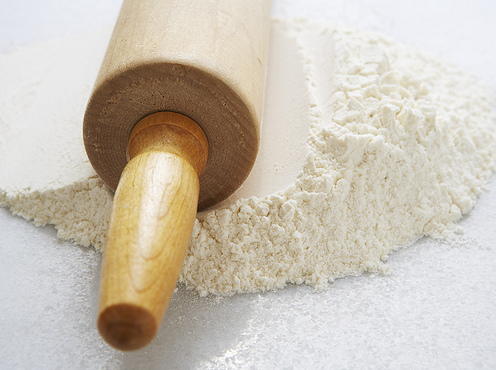Perfect Pie Crust 101
Your folders
Your folders
Author : Rick Rodgers

Ingredients
Export 7 ingredients for grocery delivery
Instructions
Step 1
In a large bowl, mix the flour, sugar, and salt until combined. Using a pastry blender, rapidly cut the shortening and butter into the flour mixture until it is the consistency of coarse bread crumbs with some pea-sized pieces. Do not blend to a fine cornmeal-like consistency. If the fats stick to the wires of the blender, scrape them off.
Step 2
In a glass measuring cup, mix the ice water, egg yolk, and vinegar. Tossing the flour mixture with a fork, gradually add the ice-water mixture, sprinkling it all over the ingredients in the bowl. Be stingy with the water—you can always add more, but it is difficult to remedy pie dough that is too wet. Mix well, being sure to moisten the crumbs on the bottom of the bowl. Add just enough liquid that the dough clumps together. It does not have to come together into one big ball. To check the consistency, press the dough between your thumb and forefinger. The dough should be moist, but not wet and not crumbly. If necessary, gradually mix in more ice water, 1 teaspoon at a time, until you reach the correct consistency.
Step 3
Gather up the dough into a thick disk and wrap in wax paper or plastic wrap. If making a double-crust pie, divide the dough into two disks, one slightly larger than the other. Refrigerate the dough for at least 30 minutes and up to 2 days. The optimum rest period is 2 hours, which allows the dough to relax and chill without becoming rock hard. If the dough is well chilled and hard, let it stand at room temperature for 10 to 15 minutes to soften slightly before rolling out.
Step 4
To roll out a single crust, sprinkle the work surface (preferably a pastry or cutting board) lightly but completely with flour, then spread out the flour with the palm of your hand into a very thin layer. Place the dough on the work surface, then sprinkle the top of the dough with a little flour. Don’t bother to sprinkle the rolling pin with flour—it just falls off. Starting at the center of the disk, roll the dough away from you. Do not roll back and forth. Think of stretching, not rolling, the dough into shape. (If the dough cracks while you are rolling out, it may be too cold. Let it stand for a few minutes to warm up slightly, then try again.) Turn the dough a quarter of a turn. Roll out again from the center of the dough. Continue rolling out the dough, always starting from the center of the dough and turning it a quarter turn after each roll, until the dough is about 13 inches in diameter and 1/8 inch thick. (If you aren’t sure what 1/8 inch looks like, stand a ruler up next to the dough and check. This sounds elementary, but many bakers make the mistake of rolling out the dough too thin or too thick, and until you learn by practice, a ruler is the best insurance.) Be sure that the dough is the same thickness throughout, especially at the edges, which tend to be thicker than the center. Work as quickly as possible so the dough doesn’t get too warm.
Step 5
Carefully fold the dough in half. If you think the dough is too warm to fold without breaking, and you have rolled out the dough on a cutting board, transfer the entire board to a cool place—if it’s a cold day, outside, on a windowsill, or in an unheated room is fine—for a few minutes to firm up. Transfer the dough to the pie pan, with the fold in the center of the pan. Unfold the dough, letting the excess dough hang over the sides of the pan. Gently press the dough snugly into the corners of the pan. If the dough cracks, just press the cracks together. Gaps can be patched with a scrap of dough, moistened lightly around the edges to adhere it to the crust. Using kitchen scissors or a sharp knife, trim the dough to extend only ½ inch beyond the edge of the pan.
Step 6
To flute the crust, fold over the dough so the edge is flush with the edge of the pan. Use one hand to pinch the dough around the knuckle or fingertip of your other hand, moving around the crust at 1-inch intervals. Cover the dough with plastic wrap and freeze until ready to use, 20 to 30 minutes.
Step 7
To roll out a double-crust pie, roll out the larger dough disk, place it in the pan, and trim the edges so they hang about ½ inch over the pan. Fill the pie with the cooled filling, if necessary. Immediately roll out the smaller disk of dough into a 10- to 11-inch round about 1/8 inch thick. Fold the dough in half, position over the filling, and unfold. Press the edges of the two crusts together to seal. Using kitchen scissors or a sharp knife, trim the dough to extend only ½ inch beyond the edge of the pan. Flute the dough as directed in step 6.